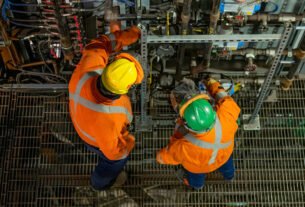[Introduction] Since mid-February, sulfuric acid prices have been on the rise, with an increase of over 20% in just half a month. In response to this rapid price surge, market sentiment varies among different stakeholders. What are the main driving factors behind this current price increase, and will the upward trend continue in the future?
01 Half-Month Sulfuric Acid Price Increase Reaches 23.97%
According to data from Zhuochuang Information, domestic sulfuric acid prices have experienced a general increase since February 17. As of March 6, the average market price for 98% sulfuric acid in China was 557.5 yuan/ton, marking a 23.97% rise over 14 working days. In response to the steadily rising prices, market participants have shown varying sentiments. Acid producers, supported by costs and demand, still have a certain willingness to push prices up, while downstream sectors face increasing cost pressures, causing some to become less accepting of high-priced supplies. So, what are the main driving factors behind this price increase, and will the upward trend continue? Next, we will analyze the strong driving forces from both the cost and demand sides.

02 Cost Side: The Strongest Driving Factor for Sulfuric Acid Price Increases
The price of raw material sulfur has risen by over 30%, providing clear support from the cost side. As a key upstream raw material for sulfuric acid, one ton of sulfur can produce about 2.8 tons of sulfuric acid, making the price of sulfur closely related to that of sulfuric acid. According to Zhuochuang Information, the price of liquid sulfur in China started rising before sulfuric acid, officially entering an upward trend on February 5. As of March 6, the average price of liquid sulfur was 2058.33 yuan/ton, with an increase of 34.20% during this upward cycle. The rapid rise in sulfur prices is primarily supported by high import prices, with the U.S. dollar prices remaining elevated. Additionally, domestic sulfur producers have reduced output due to maintenance, leading to tight sulfur resource availability and supporting a bullish market sentiment. At the same time, the downstream phosphate fertilizer sector is in the traditional peak consumption season for “spring plowing,” further bolstered by newly commissioned downstream facilities, resulting in strong demand support. The tight supply and demand, combined with external support, has led to an initial price rise in upstream sulfur, driving up the costs of sulfuric acid and becoming a major factor in its price increase.
03 Demand Side: Aiding the Upward Trend of Sulfuric Acid Prices
The average operating rate of downstream phosphate fertilizer production has increased by over 12%, boosting sulfuric acid demand. The main downstream applications for sulfuric acid are in the fertilizer and chemical markets, with the fertilizer sector—primarily phosphate fertilizers—accounting for about 35% of total sulfuric acid consumption, making it a significant factor influencing demand. As the weather warms, signs of a surge in phosphate fertilizer demand emerged around mid-February, leading to increased market inquiries, improved purchasing sentiment from downstream buyers, and more transactions for production enterprises, resulting in rising operating rates. According to Zhuochuang Information, as of March 6, the average operating rate for monoammonium phosphate (MAP) producers in China was 65.67%, an increase of 17.53 percentage points during this sulfuric acid price rise (February 17 to March 6). For diammonium phosphate (DAP) producers, the average operating rate reached 74.00%, increasing by 7.17 percentage points in the same period. As the peak season for spring fertilizer preparation unfolds, the demand for sulfuric acid from the downstream phosphate fertilizer industry is on the rise, facilitating the upward trajectory of sulfuric acid prices.
Looking ahead, the upstream sector is likely to remain strong, and the downstream will also have ongoing demand support, maintaining a bullish market sentiment. In the short term, the sulfuric acid market may continue its upward trend. However, it is noteworthy that as market prices continue to rise, the willingness of downstream buyers to accept higher prices may decrease. In the medium to long term, prices may stabilize after rising, with attention needed on changes in cost and demand.
Specifically, the upstream sulfur market may continue to be a major bullish support factor. Currently, sulfur prices in the external market remain high, and some domestic sulfur facilities have maintenance plans in March and April. Coupled with the absence of signs of weakening demand from downstream, the market’s bullish sentiment remains strong, and further price increases in the sulfur market are expected to continue supporting sulfuric acid prices. Short-term support from the downstream phosphate fertilizer sector is still present but may gradually weaken. The phosphate fertilizer market is currently in the preparation phase for fertilization. Due to significant pending shipments and localized supply tightness, operating rates may remain high overall, providing stable support for sulfuric acid demand in the short term. However, considering rising costs, some enterprises are facing profit pressures, which may lead to a decline in operating rates and gradually weaken support for sulfuric acid prices.




